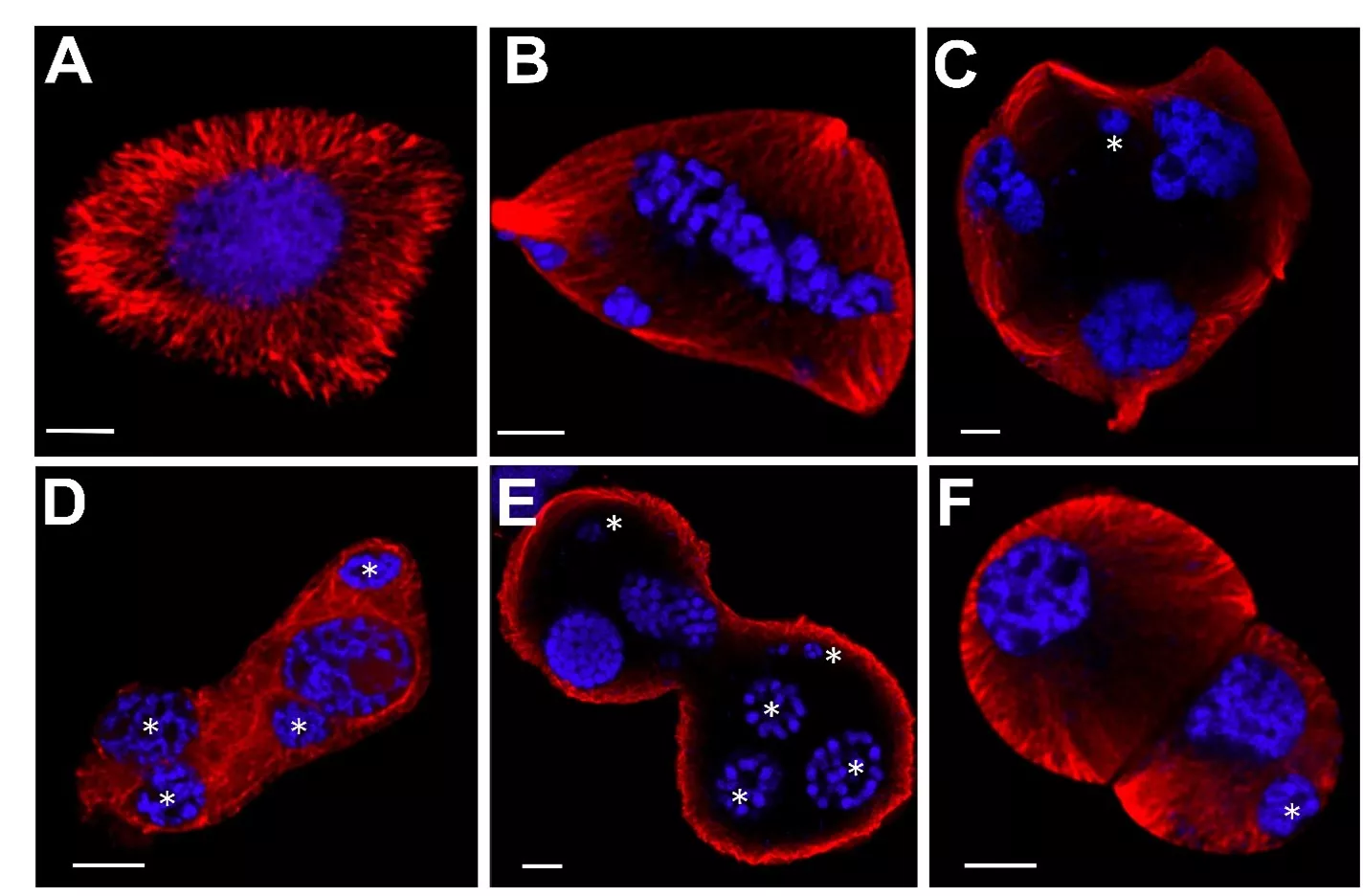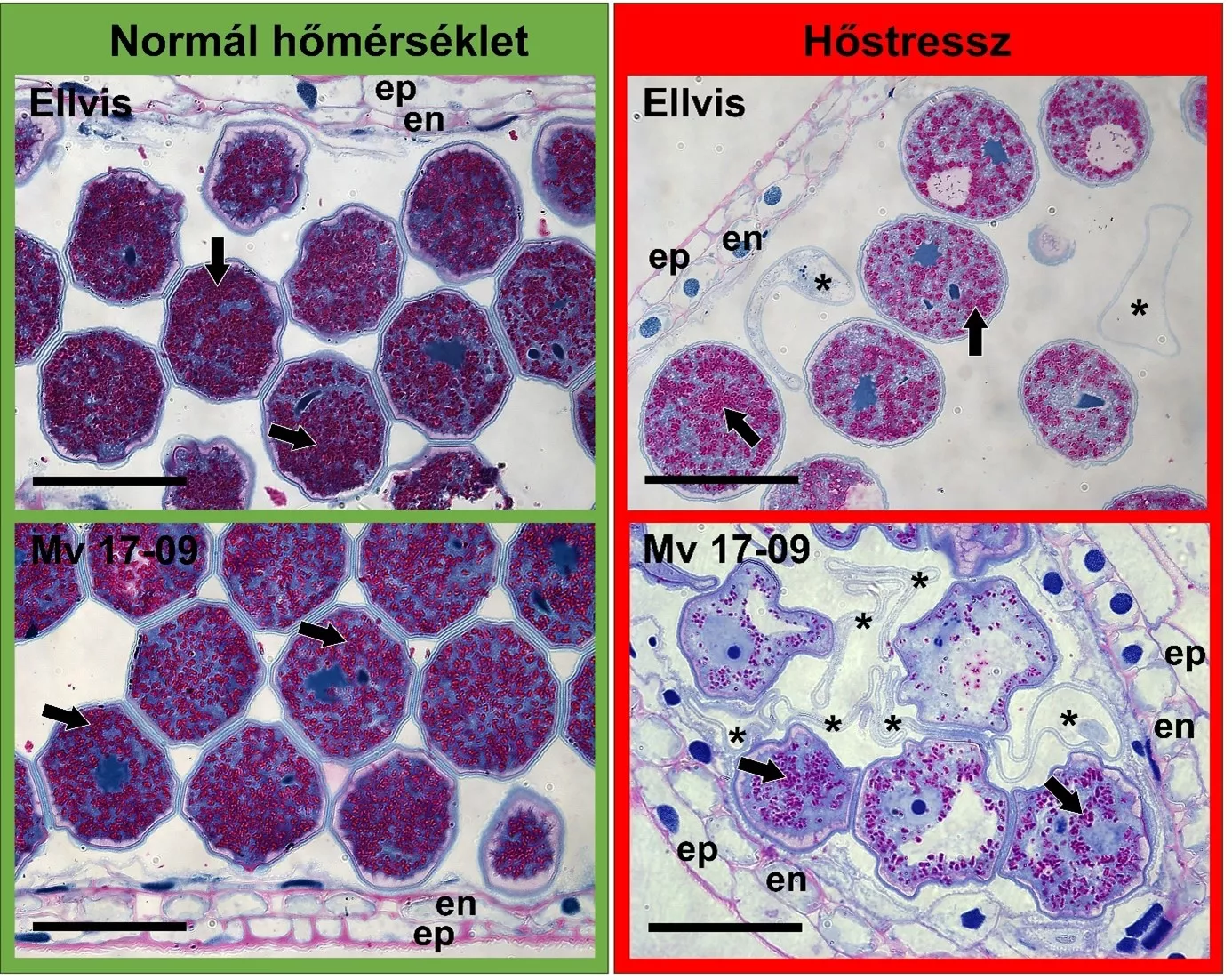Researchers of the Genetic Variability Research Group at the Agricultural Institute of the HUN-REN Centre for Agricultural Research investigated the cause of the sensitivity of wheat to heat stress occurring during meiosis, which greatly contributes to yield loss. According to their results, even short-term stress can cause lasting changes in pollen development by damaging the cell's skeletal proteins and life cycle, thus reducing fertility and yield. By examining the gene expression patterns of wheat varieties tolerant and sensitive to heat stress, the researchers revealed the role of meiosis- and pollen development-related key genes in developing sensitivity. The resulting list of probable tolerance genes may help future breeders create varieties more tolerant to heat waves. The paper presenting the results was published in the international scientific journal Frontiers in Plant Science.
Meiosis is one of the starting points of sexual reproduction. This special division allows the start of gamete development and the rearrangement of genetic material inherited from the parents and thus ensures the desirable genetic diversity of the offspring. It has long been known that heat stress during meiosis leads to a decrease in the number of gametes, and thus to yield loss. To reveal the background of the sensitivity, the researchers exposed plants of a heat-tolerant and a heat-sensitive winter wheat variety to a short, 24-hour heat stress at the beginning of meiosis. Control and heat-treated pollen mother cells, the daughter cells produced after the division, and the subsequent development of the pollen were also examined using a variety of technical approaches.
Examining the structure of the cells with a high-resolution confocal microscope showed that the components of the cytoskeleton (microtubules and actin filaments), which play an important role in the movement of chromosomes and the separation of daughter cells during division, were significantly damaged by the high temperature. These injuries were particularly visible in the heat-sensitive variety and were associated with a large reduction in cytoskeleton amount as well as various abnormalities of the progeny cells (Figure 1). The function of one of the control points of meiosis, the so-called spindle assembly checkpoint, was also impaired in the sensitive variety. As a result, the separation of the chromatids started even before the proper attachment of the spindle filaments. In conclusion, some of the chromatids did not reach the cell poles, and nuclear fragments (micronuclei) were created (Figure 1).

Figure 1. Disorders caused by stress, showed by the microspores of the heat-sensitive wheat variety. Normal structure (A), trilateral symmetry (B, C), undivided daughter cells (C–E), and unequal cell division (F). The blue color represents the cell nucleus (chromatin), and the red represents the cytoskeleton (microtubules).
Asterisk: nuclear fragments. Scale bars correspond to 5 micrometers.
Using histological and molecular biological methods, the researchers confirmed that even a short-term heat treatment applied during a sensitive period can lead to significant and long-term negative effects on pollen development. In the case of the sensitive wheat variety, the development of the inner nourishing tapetum cell layer changed, leading to a slower development of pollen and a reduced accumulation of reserve starch (Figure 2). On the other hand, the pollen development of the heat-tolerant variety did not change significantly because of the stress. The bioinformatics analysis of the genes related to the examined structural and developmental processes revealed the differences in gene expression underlying the different stress reactions of the two cultivars, expanding the list of possible tolerance genes.

Figure 2. The effect of heat stress on the pollen development of heat-tolerant ('Ellvis') and sensitive ('Mv 17-09') wheat varieties. Asterisk: dead cells; ep: epithecium; en: endothecium; arrow: starch granules. Scale bars correspond to 50 micrometers.